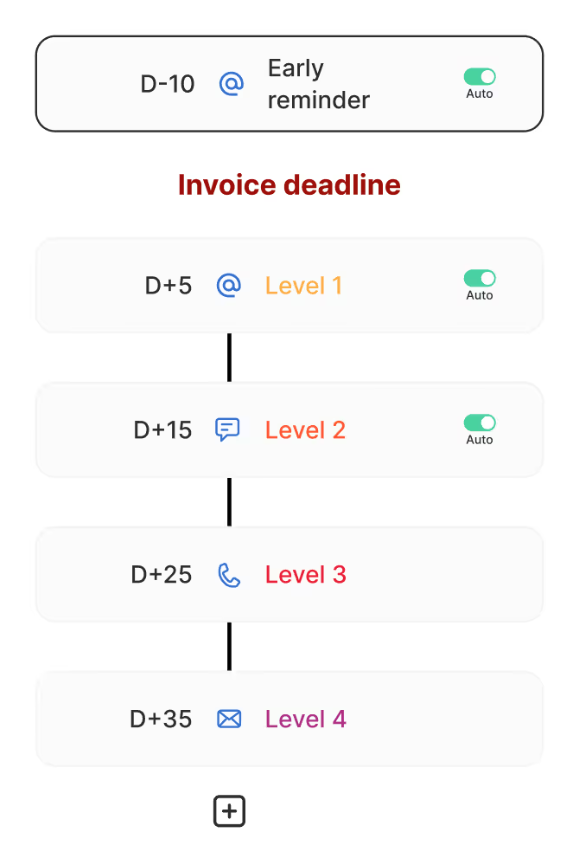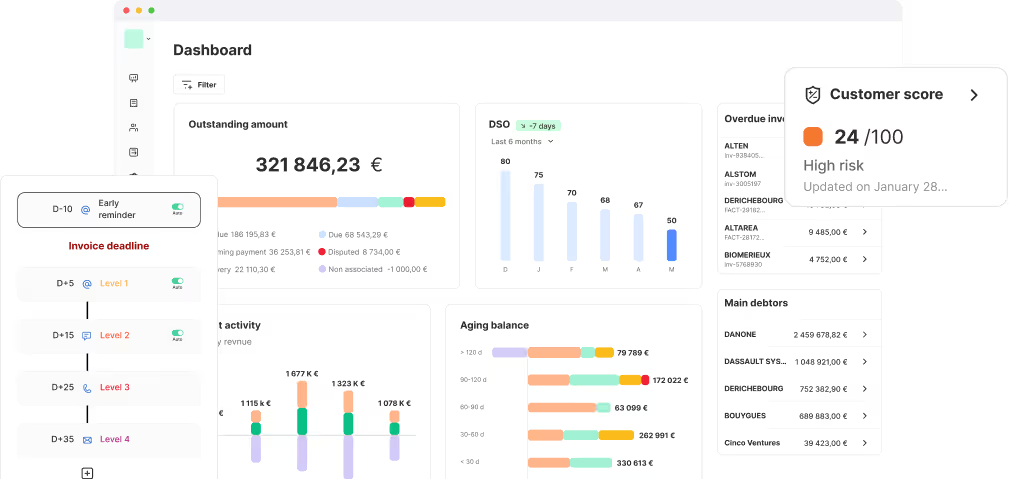When faced with a late payment from a customer, and if you regularly read LeanPay 😃 (our blog is full of helpful tips for reminders), you have probably gotten used to sending follow-up emails, perhaps even using our accounts receivable software 🫶
But have you thought about adding reminder calls? A simple phone conversation can have a major impact on recovering an unpaid invoice.
We explain why and, most importantly, how to make your reminder calls successful.
Why use reminder calls?
With an accounts receivable software like LeanPay, you can create multichannel follow-up scenarios: by email, by phone, by standard mail or registered letter.
Including a phone call in your scenario to recover an unpaid invoice offers several advantages:
Understand the reason for non-payment
A reminder by phone call allows you to speak directly with your customer and uncover the real reason behind the delay. This can quickly unblock the situation. Did they simply miss your emails? Are they facing temporary financial difficulties and requesting a payment schedule? Are they bad payers acting in bad faith? Or do they dispute the invoice amount or service quality?
Adjust your collection strategy
Once you know the reason for the unpaid invoice, you can act accordingly: resend the invoice to the correct address, propose instalments, mark the invoice as a dispute and monitor it closely, and so on.
This makes reminder calls an essential step in qualifying the case and an indispensable part of any optimised reminder strategy.
Preserve the customer relationship
When it comes to sensitive topics such as collections, direct contact is often appreciated. A reminder call helps you maintain a constructive relationship with your customer.

Implemented in just a few weeks before summer 2023 with a fully operational Sage 100 connector. Our group's goal of reducing DSO by 40% was achieved in less than a year thanks to Leanpay!
Bruno G. - CFO
When to make a calls reminder

Adding a reminder call to your scenario can have a significant impact on recovering an overdue invoice. But timing matters.
For instance, you may start with a courtesy email a few days before the due date. If the deadline passes without payment, send an initial reminder email 5 days later, and perhaps a second one shortly after (depending on your usual process and customer type).
If the invoice remains unpaid, that’s when a reminder call comes in. At this stage, it’s about understanding why the payment still hasn’t been made.
How to succeed with reminder calls
A successful reminder call requires preparation and a clear approach. Here’s how to maximise your chances.
Prepare your call
To make an effective reminder call, you need to be familiar with the case. Have all the essential information at hand:
- The overdue invoice:
Which invoice number? What is the amount? How many days past due is it? With LeanPay, all this information is prepared and accessible in one place.
- The customer:
It is very helpful to have the customer’s outstanding amount and invoice history. Ensure all invoices have been recorded and reconciled. LeanPay automatically retrieves invoices and payments from your accounting system. You would lose credibility by calling about an invoice that has already been paid. Analyse their payment behaviour: do they often pay late, or is this an isolated case? This information helps guide the conversation.
- Information to gather during the call:
Set a script for the call. LeanPay lets you define one to follow during the conversation and take notes, which can be shared with other users, facilitating collaboration. This is particularly useful if your sales team is involved in follow-ups.
Handle objections
Customers may raise issues around delivery, service quality, or prior commitments. With LeanPay, all comments and notes are centralised and accessible to both finance and sales teams, allowing you to respond clearly and confidently to objections.
Example reminder call scenario
- Ask about the status of the invoice and why it hasn’t been paid
- Respond to possible objections
- Negotiate a solution: confirm a payment date or agree on a schedule
- Mention late payment penalties if necessary
- Review the status of other invoices
Always set a clear recovery objective for the call: this will guide your negotiation.
.png)
Best practices for reminder calls
Speak to the right contact
It sounds obvious, but speaking directly to the person responsible for payments avoids wasted time and ensures efficiency.
Avoid excessive pressure
The purpose of reminder calls is to reopen dialogue, not to intimidate. Stay calm and polite, listen carefully, and negotiate reasonably. Avoid repeated calls, aggressive language, or threats: these are unprofessional and may even be unlawful.
Send a follow-up email
After your call, send a summary email confirming the discussion and agreements reached. This gives you written proof in case the process escalates to debt collection.
Example:
"Following our phone call today, you confirmed that invoice no. [221437] for [1 280,60 €] was overlooked. We agreed on the following new payment terms: [insert terms]. Thank you for your time and cooperation."
What if reminder calls don’t work?
If the reminder call is unsuccessful, continue your follow-up scenario with a standard letter, followed by a registered letter if needed. If payment is still not received, it is time to escalate to judicial recovery.
FAQ on reminder calls
When is the best time to make reminder calls?
Ideally after the due date and a few automated follow-up emails. The exact timing depends on your customer’s payment habits.
How can I prepare for a phone call reminder effectively?
Gather the invoice details, customer history, and outstanding amount. Prepare a clear script and anticipate objections.
Should I use phone call reminders for all customers?
Use them for unpaid invoices where emails alone have not worked, particularly for customers with significant outstanding amounts.
How do reminder calls affect the customer relationship?
When done politely and professionally, they can strengthen trust by demonstrating your commitment to resolving issues amicably.

























